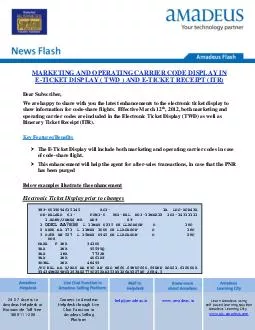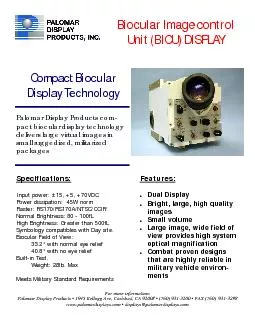PPT-1 Display Power Characteristics
Author : pasty-toler | Published Date : 2019-12-03
1 Display Power Characteristics Lin Zhong ELEC518 Spring 2011 2 Display power 3 Display power Contd iPAQ 4350 2004 4 Display power Contd Audiovox 5600 2004 5 LCD
Presentation Embed Code
Download Presentation
Download Presentation The PPT/PDF document "1 Display Power Characteristics" is the property of its rightful owner. Permission is granted to download and print the materials on this website for personal, non-commercial use only, and to display it on your personal computer provided you do not modify the materials and that you retain all copyright notices contained in the materials. By downloading content from our website, you accept the terms of this agreement.
1 Display Power Characteristics: Transcript
Download Rules Of Document
"1 Display Power Characteristics"The content belongs to its owner. You may download and print it for personal use, without modification, and keep all copyright notices. By downloading, you agree to these terms.
Related Documents














